I'm using Drupal 6 with MySQL version 5.0.95 and at an impasse where one of my queries which displays content based on most recent article date slows down and because of the frequency of being used kills the site performance altogether. The query in question is as below:
SELECT n.nid,
n.title,
ma.field_article_date_format_value,
ma.field_article_summary_value
FROM node n
INNER JOIN content_type_article ma ON n.nid=ma.nid
INNER JOIN term_node tn ON n.nid=tn.nid
WHERE tn.tid= 153
AND n.status=1
ORDER BY ma.field_article_date_format_value DESC
LIMIT 0, 11;
The EXPLAIN of the query shows the below result:
+----+-------------+-------+--------+--------------------------+---------+---------+----------------------+-------+---------------------------------+
| id | select_type | table | type | possible_keys | key | key_len | ref | rows | Extra |
+----+-------------+-------+--------+--------------------------+---------+---------+----------------------+-------+---------------------------------+
| 1 | SIMPLE | tn | ref | PRIMARY,nid | PRIMARY | 4 | const | 19006 | Using temporary; Using filesort |
| 1 | SIMPLE | ma | ref | nid,ix_article_date | nid | 4 | drupal_mm_stg.tn.nid | 1 | |
| 1 | SIMPLE | n | eq_ref | PRIMARY,node_status_type | PRIMARY | 4 | drupal_mm_stg.ma.nid | 1 | Using where |
+----+-------------+-------+--------+--------------------------+---------+---------+----------------------+-------+---------------------------------+
This query seemed relatively simple and straight forward and retrieves articles which belong to a category (term) 153 and are of status 1 (published). But apparently Using temporary table and Using filesort means the query is bound to fail from what I've learnt browsing about it.
Removing field_article_date_format_value from the ORDER BY clause solves the Using temporary; Using filesort reduces the query execution time but is required and cannot be traded off, unfortunately same holds equally true for the site performance.
My hunch is that most of the trouble comes from the term_node table which maps articles to categories and is a many-many relationship table meaning if article X is associated to 5 categories C1....C5 it will have 5 entries in that table, this table is from out-of-the-box drupal.
Dealing with heavy DB content is something new to me and going through some of the similar queries ( When ordering by date desc, "Using temporary" slows down query, MySQL performance optimization: order by datetime field) I tried to create a composite index for the content_type_article whose datetime field is used in the ORDER BY clause along with another key (nid) in it and tried to FORCE INDEX.
SELECT n.nid, n.title,
ma.field_article_date_format_value,
ma.field_article_summary_value
FROM node n
INNER JOIN content_type_article ma FORCE INDEX (ix_article_date) ON n.nid=ma.nid
INNER JOIN term_node tn ON n.nid=tn.nid
WHERE tn.tid= 153
AND n.status=1
ORDER BY ma.field_article_date_format_value DESC
LIMIT 0, 11;
The result and the following EXPLAIN query did not seem to help much
+----+-------------+-------+--------+--------------------------+-----------------+---------+----------------------+-------+---------------------------------+
| id | select_type | table | type | possible_keys | key | key_len | ref | rows | Extra |
+----+-------------+-------+--------+--------------------------+-----------------+---------+----------------------+-------+---------------------------------+
| 1 | SIMPLE | tn | ref | PRIMARY,nid | PRIMARY | 4 | const | 18748 | Using temporary; Using filesort |
| 1 | SIMPLE | ma | ref | ix_article_date | ix_article_date | 4 | drupal_mm_stg.tn.nid | 1 | |
| 1 | SIMPLE | n | eq_ref | PRIMARY,node_status_type | PRIMARY | 4 | drupal_mm_stg.ma.nid | 1 | Using where |
+----+-------------+-------+--------+--------------------------+-----------------+---------+----------------------+-------+---------------------------------+
The fields n.nid, ca.nid, ma.field_article_date_format_value are all indexed. Querying the DB with Limit 0,11 takes approximately 7-10 seconds with the ORDER BY clause but without it the query barely takes a second. The database engine is MyISAM. Any help on this would be greatly appreciated.
Any answer that could help me in getting this query like a normal one (at the same speed as a query without sort by date) would be great. My attempts with creating a composite query as a combination of nid and field_article_date_format_value and use in the query did not help the cause. I'm open to providing additional info on the problem and any new suggestions.
